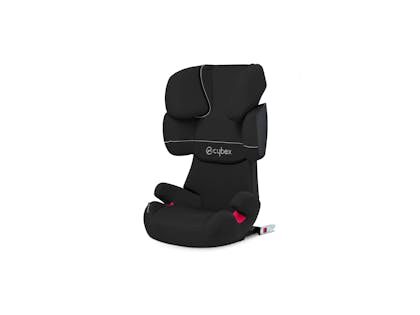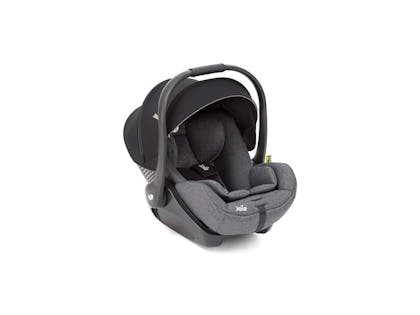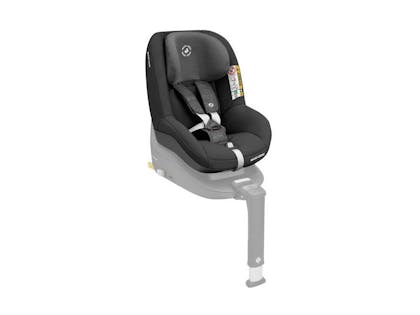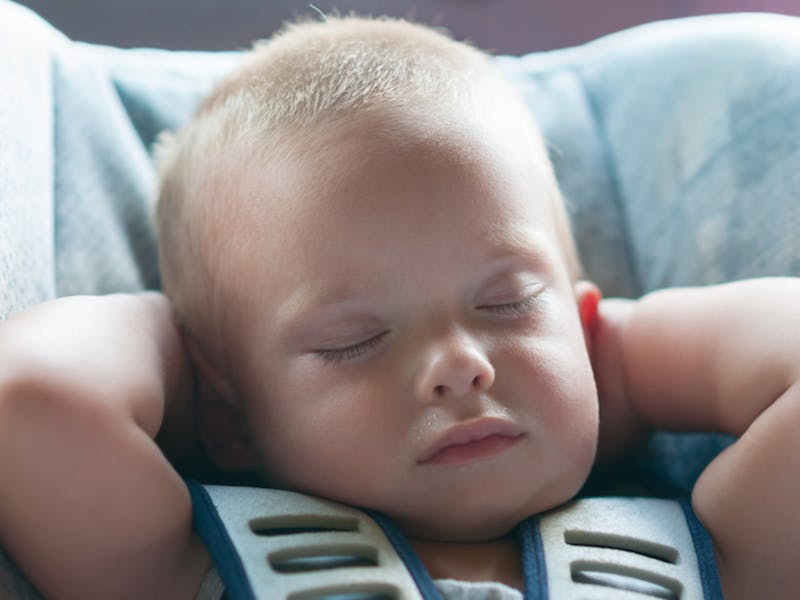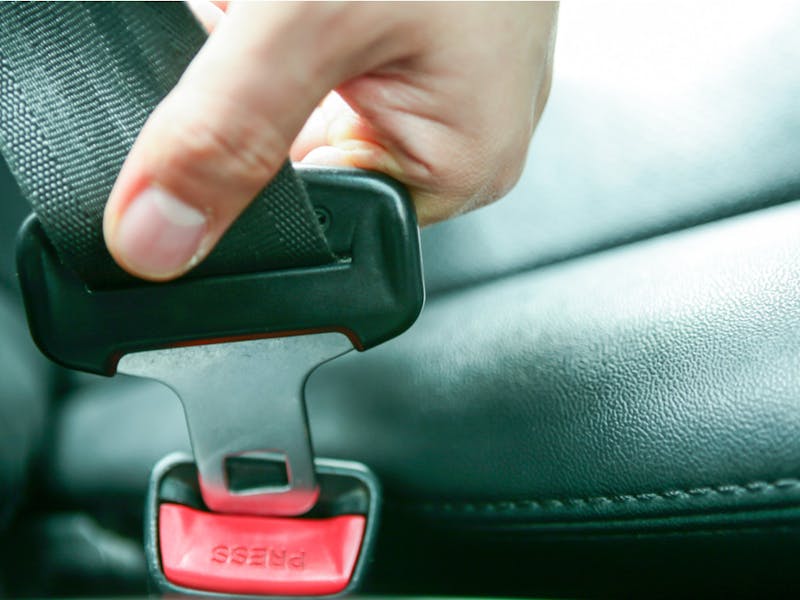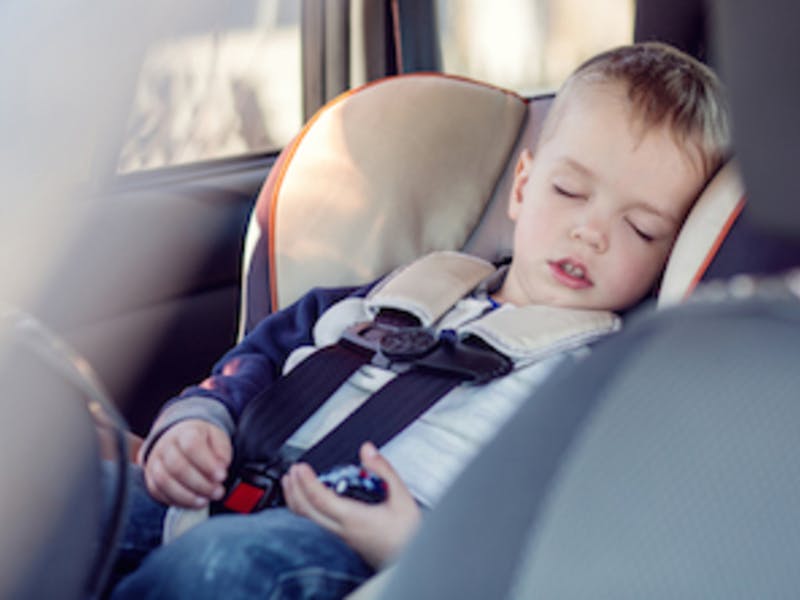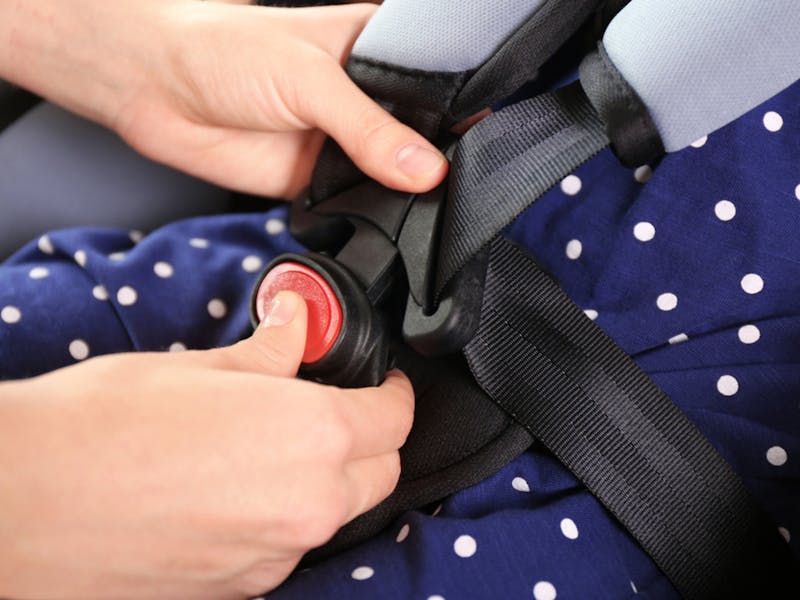buying guides
The Netmums guide to car seats - everything you need to know
This page contains affiliate links, which means we may earn a small amount of money if a reader clicks through and makes a purchase. All our articles and reviews are written independently by the Netmums editorial team.
It might not be the first thing you think of when you find out that you’re having a baby, but your child’s car seat is the most important piece of kit you’ll need to buy.
The current legislation (passed in 2006) makes it the law for all babies and children to travel in a properly fitted car seat from birth to age 12 or 135cm tall (whichever of these happens first).
Our favourite car seats for every age and stage:
1. Cybex Silver Solution X-Fix
*For children 15 to 36 kg (approx. 4 to 12 years)
*Suitable for cars with and without ISOFIX
*Available in 9 different striking colour ways
Cybex's Silver Solution X-Fix is the ideal high back booster as it can be installed using either the car's seatbelt or Isofix fittings. Suitable for children from four-years-old to around 12, it has sturdy built-in side impact protection.
The reclining headrest cleverly prevents the child's head from falling forward while asleep, which gives them even greater protection if an accident occurs.
2. Joie i-Level
*Patented Intelli-Fit foam for ultimate side impact protection
*Multi-position, ergonomic carry handle with soft-grip
*Lies flat when connected to a pushchair chassis as a travel system
The Joie i-Level car seat is ideal for newborns as it reclines to a 157° angle and can lie completely flat when used on a pushchair chassis. The Grow Together™ multi-height headrest and harness system adjusts simultaneously so there's no fiddly threading - phew!
3. Maxi-Cosi Pearl Smart
*i-Size ready used with the FamilyFix base
*Five-point safety harness
*Sun canopy and hood
i-Size-ready model that has an innovative 'stay open' harness that keeps the buckles and straps out of the way when you're putting your child into the seat, plus four different reclines in both forward and rearward-facing positions.
1. How do I buy the right car seat?
There are three types of car seat - rear-facing, forward-facing and booster seats. Which type you need depends of the age of your child.
Traditionally, rear-facing seats have been used just for the first year, but extended rear-facing seats are now becoming more common, as they have been proven to be safer, particularly in front-on collisions.
Forward-facing seats are suitable from around 15 months.
Booster seats - preferably with a back - are best used for children from aged four years upwards. Backless booster seats should be used for children aged six years and above, if at all.
Traditionally car seats were divided up into 'Groups' and were classified by a child's age and weight:
Group 0+
Birth to 12/15 months (or 13kg)
Group 1
15 months to four years old
Group 0+/1
Birth to four years old
Group 1/2/3
12 months to 12 years
Following the increase in i-Size-ready and extended rear-facing seats, which use a child's height as a guide, these 'groups' are becoming less common.
You can read more about the i-Size legislation and extended rear-facing car seats here.
What is i-Size?
i-Size is a new European-wide standard in car seat safety that’s running alongside current legislation and promotes rear-facing travel for longer, better side impact protection, and using height rather than weight to grade seats.
i-Size seats tend to more expensive, and usually covers the Group 0+ and 1 stages.
Should I choose seatbelt fastening or Isofix?
Cheaper car seats tend to be installed using a seatbelt. The other option is a model with Isofix fittings. This attaches the car seat directly to the car's chassis and creates a safer and more rigid connection. Some seats also have an extendable leg or a top tether to give even more stability.
How much should I spend on a car seat?
You can spend anything from £30 to well over £200, depending on the features a car seat has.
Car seats that have Isofix fittings tend to be more expensive than those without, and you might also need to buy a separate Isofix base for around £70 to £100.
Why is a lie-flat seat so important for a newborn?
Look for a seat that has a good recline, or even better, can lie flat completely. This is the best position for a newborn's breathing and spine development.
What other features should you look for in a car seat?
A car seat with a five-point harness offers greater security than one with three straps. Washable covers are always useful, and look for lots of padding on the straps and seats for comfort. Large wings on either side of the seat also give better protection against an impact from the side.
2. How do I install a car seat?
Always check before you buy a seat that it's compatible with your make and model of car.
You can either ask your retailer, or look on the car seat manufacturer's website for information to help guide you in choosing the correct model.
Retailers often offer a fitting service, as do many garages, which is particularly useful for first-time parents.
i-Size car seats often have to be bought directly from a retailer, rather than online, so they can make sure it fits correctly in your car.
Seats are installed using either a car's seatbelt or an Isofix mechanism.
Isofix creates a more solid, rigid connection between car seat and car, using fittings that attach from the bottom of the car seat to plugs in the car seat's chassis.
Isofix car seats often have an indicator light that lets you know when it's correctly installed.
Some car seat models also have a top tether , which is a strap that attaches the back of the car seat to the roof. Others might have a support leg that adds even more stability.
What's the safest position for children to travel in a car?
The safest place for your baby to travel is in the back seat of the car.
It’s also recommended that babies shouldn’t be in a car seat (including a car seat on a pushchair chassis) for more than two hours, to avoid damaging their developing spine.
If you intend to travel long distances frequently, it could be worth investing in a lie-flat car seat to avoid this issue.
In the event of a crash, the coat's layers will contract, and the straps will be looser as a result, meaning that a child won't be held as securely.
3. How do I get the right fit?
According to the latest research , 51% of car seats were found to be fitted incorrectly, so follow our tips for making sure that your child's seat is securely installed.
Is the car seat seat compatible with your car?
Not all car seats can be fitted safely in all cars, so it’s vital to check this out.
If you’re buying a new seat, visit a store that has trained car seat fitters to install it for you.
If you’re using your existing car seat in a different car from usual – perhaps a friend’s car, taxi or hire car – bear in mind that it may not fit, and check before you travel, by looking online at the manufacturer’s website.
Is the seatbelt in the correct position?
Many car seat problems are caused by the seatbelt.
It’s essential that it runs through the route guides on the car seat (these are usually blue or red).
It’s also important to check that the seatbelt isn’t twisted, and that it’s tight enough.
If you need to pull the seatbelt out all the way to fit the seat, make sure you pull it tight again afterwards, so there’s minimal movement when you wobble the seat.
Should the car seat be placed at the front or back of the car?
Rear-facing car seats must never be fitted on a front passenger seat with an airbag.
If you’re in an accident and the airbag inflates, the force will slam the car seat backwards and could cause fatal injuries.
The safest place for any child seat – forward- or rear-facing – is in the back of the car. If you have to fit a child seat in the front, make sure the airbag is deactivated.
Have you read the instructions properly?
It sounds obvious, but the key to fitting a car seat correctly is to follow the manufacturer’s instructions to the letter.
These are usually printed on the side of the car seat.
Instructions can be hard to follow at first, so have a look at YouTube or the manufacturer’s website to see if there are any video guides on fitting the seat.
If anyone else is going to be fitting your child’s seat, such as your partner or the grandparents, make sure they follow the instructions exactly, too.
What is buckle crunch?
Buckle crunch is where the buckle of the adult seatbelt is positioned against the plastic casing of the child car seat.
This is something that is often overlooked, but if you’re involved in a crash, buckle crunch could mean that the seatbelt buckle fails and springs open, so the car seat is no longer secure.
This could lead to devastating injuries.
Always make sure that only the webbed part of the adult seatbelt is in contact with plastic parts of the car seat.
So, why is Isofix the best choice?
All cars sold new in the UK since 2002 are fitted with Isofix points.
These are anchor points that allow car seats to be secured directly onto the seat, without using the seatbelt.
They are much easier to fit correctly, so if possible, buy an Isofix seat and use that method of fitting whenever possible, rather than using a seatbelt.
Isofix seats also have visual indicators to show that the seat is fitted properly, so check these before you set off.
Is the harness adjusted correctly?
Even if the car seat itself is fitted properly, your child could still be at risk if the harness isn’t correctly adjusted.
The shoulder straps should run flat across your child’s shoulders, rather than coming up and over from behind his back, or downwards from head level.
You should just be able to slide a flat hand between the harness and your child’s body.
Bulky clothes like winter coats can make harnesses less effective , so take them off before you put your child in their seat.
And finally, give it a wobble
Try rocking or wobbling the seat to make sure it doesn’t shift around.
The car seat should fit solidly on the seat with the base fully in contact with the seat, and there should be minimal movement in any direction.
4. When is it time to change to the next stage car seat?
Never be in a rush to move your child to the next stage of car seat, and always wait until they reach the maximum height and weight as outlined by the manufacturer.
You should always move your child however, if their head reaches the top of the seat or is poking over.
Why should you keep your child rear-facing for as long as possible?
If you are in a frontal collision, the most common type of crash, a rear-facing car seat pulls a child’s head, neck and spine into the seat, wheras a forward-facing seat will fling them outwards, potentially causing more injury.
From-birth car seats have always been rear-facing, with parents moving their children into a forward-facing position at around a year old, but the new i-Size legislation in particular is encouraging parents to make the move later.
There are now extended rear-facing seats that can transport your child rear-facing for the first four years, mirroring other European countries, where the death rate has plummeted as a result.
How old should your child be when you start using a car booster seat?
There are two types of booster seat , those with and without a back.
Car booster seats without a back don't offer the same protection as those with a back, especially in the event of a side impact.
Some people have been allowing children as young as three to travel seated in one, rather than using a proper car seat with a back.
The law has changed recently to help prevent this, and now all NEW backless seats brought to market are only to be used by children weighing over 22kg or over 125cm in height.
Confusingly, booster seats that are already owned or on sale can still be used by children under these height and weight limits.
When do car seats expire?
A car seat usually has a life span of around six years, and you can usually find the expiration date on an attached label.
If you can't find one, check for details on the manufacturer’s website.
Read on:
• The best and safest car seats
• Ten car seat safety tips you need to know

